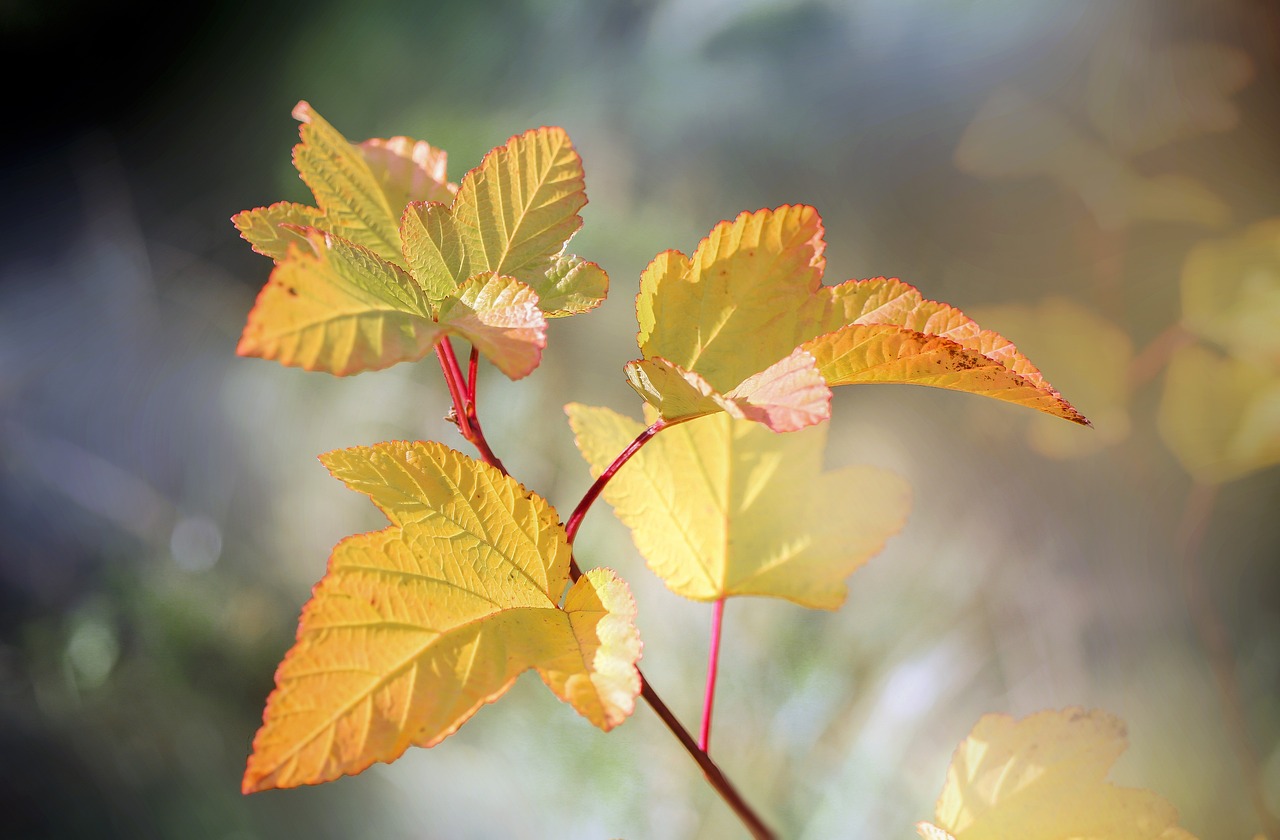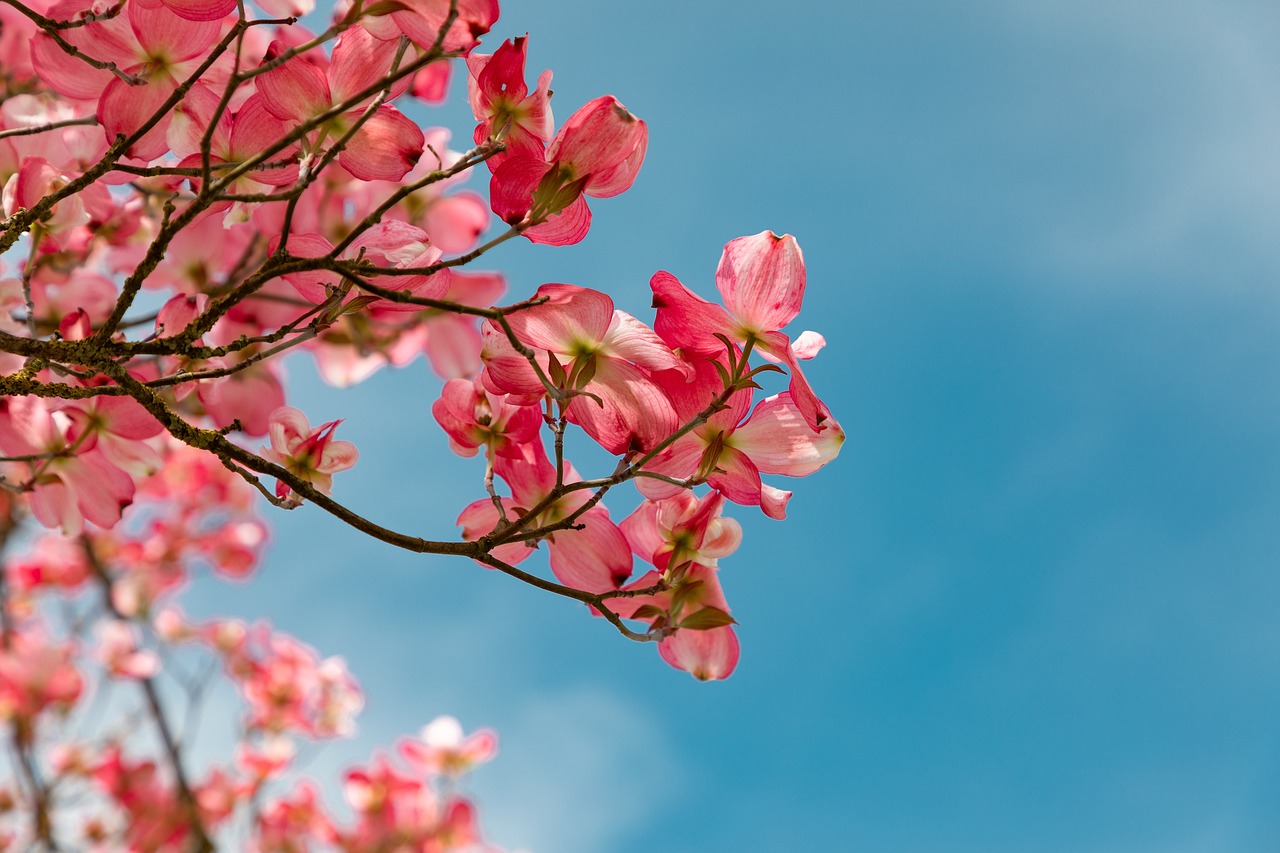Use Upcycled Materials to Create a Miniature Fairy Garden
Have you ever looked at a pile of discarded items and thought, "What can I do with all this?" Well, you're in for a delightful surprise! Transforming upcycled materials into a miniature fairy garden is not only a fun project but also a fantastic way to embrace creativity and sustainability. Imagine a tiny world filled with whimsy, charm, and a touch of magic, all crafted from things that might otherwise end up in the landfill. This article will guide you through the enchanting process of creating your very own fairy garden, using items you already have at home.
Creating a fairy garden allows you to express your artistic flair while also promoting eco-friendliness. By using upcycled materials, you can give new life to old objects, turning them into unique decorations that tell a story. Whether it’s an old glass jar, a broken toy, or even some stones from your backyard, each piece can contribute to the enchanting atmosphere of your miniature garden. So, let’s dive into the world of fairy gardens and see how we can bring a little magic to our lives!
Selecting suitable materials is essential for creating a stunning fairy garden. You might be surprised at how many everyday items can be repurposed into beautiful components of your miniature world. Here are some ideas to get you started:
- Glass Jars: Perfect for creating terrarium-style gardens or as whimsical fairy houses.
- Old Toys: Think of using toy figurines, cars, or even dollhouse furniture to add character.
- Natural Elements: Collect twigs, stones, or leaves to incorporate organic beauty into your garden.
Each of these materials can add a unique touch to your fairy garden, making it a reflection of your personality and creativity. The beauty of upcycling lies in the endless possibilities it offers, allowing you to create something truly special from what might seem like trash.
A well-thought-out layout enhances the visual appeal of your fairy garden. When planning your garden's design, consider elements like pathways, focal points, and the arrangement of plants and decorations. Think of your garden as a miniature landscape where every element plays a role in the overall story. For instance, a winding path made from pebbles can lead to a tiny fairy house, while a cluster of colorful flowers can serve as a vibrant backdrop. Don't hesitate to sketch out your ideas on paper; it can help you visualize the final product.
Plants are vital to a fairy garden's charm. When choosing plants, look for small, hardy varieties that can thrive in your garden's conditions. Consider incorporating plants like moss, miniature ferns, or even small flowering plants. Arranging these plants thoughtfully will create a lush, inviting environment for your miniature inhabitants. Don't forget to think about the colors and textures of the plants; they can significantly enhance the overall look of your fairy garden.
If you're looking for something that requires minimal care, succulents are your best bet. These resilient plants come in various shapes and colors, making them perfect for adding visual interest to your fairy garden. Plus, their low water needs mean you won’t have to worry about constant upkeep. Incorporating succulents can give your garden a modern twist while still maintaining that magical feel.
Why not bring your fairy garden to life throughout the year with seasonal themes? You can decorate your garden to reflect the changing seasons, using upcycled materials to enhance the theme. For example, in the fall, you might add tiny pumpkins made from painted stones, while in winter, you could create a snowy scene using white pebbles and glitter. This not only keeps your garden fresh and exciting but also allows you to engage with the changing seasons in a creative way.
Miniature accessories bring personality and storytelling to your fairy garden. Think about crafting or sourcing tiny items, like furniture or figurines, from upcycled materials. For instance, an old spoon can become a whimsical bench, while bottle caps can serve as tiny tables. The key is to let your imagination run wild; every little addition can add depth to your garden's narrative.
Regular maintenance ensures your fairy garden remains vibrant and inviting. Essential care tips include watering, pruning, and refreshing decorations to keep your miniature world thriving. A little bit of care goes a long way in preserving the magic of your fairy garden, so don’t neglect it!
Different seasons require varying care approaches. For instance, during the hot summer months, make sure your plants are getting enough water, while in the winter, consider protecting them from frost. Understanding how to adapt your maintenance routine throughout the year will ensure your fairy garden looks its best regardless of the weather.
Over time, your fairy garden may need a refresh. Explore creative ideas for changing up your design, using new upcycled materials or shifting plants and accessories to keep the magic alive. Perhaps you’ve found a new glass jar to use or a cute figurine that would fit perfectly in your garden. Don’t be afraid to experiment and make changes; after all, it’s your magical world!
Q: What materials can I use for my fairy garden?
A: You can use a variety of upcycled materials such as glass jars, old toys, stones, and natural elements like twigs and leaves.
Q: How do I maintain my fairy garden?
A: Regular maintenance includes watering, pruning, and refreshing decorations. Seasonal care is also important to ensure your plants thrive.
Q: Can I use succulents in my fairy garden?
A: Absolutely! Succulents are perfect for fairy gardens due to their low water needs and diverse shapes.
Q: How can I create a seasonal theme?
A: You can decorate your garden with items that reflect the current season, using upcycled materials to enhance the theme.

Choosing the Right Upcycled Materials
When it comes to creating a miniature fairy garden, the magic often lies in the materials you choose. Upcycling is not just about reusing items; it’s about transforming the ordinary into the extraordinary. Imagine strolling through your home and seeing potential fairy garden materials in every nook and cranny. From glass jars that once held your favorite jam to old toys that have lost their charm, the possibilities are endless. The key is to look at these items with a fresh perspective and let your imagination run wild.
First, consider the versatility of glass jars. These transparent wonders can serve as enchanting terrariums or whimsical lanterns. You can fill them with soil, small pebbles, and tiny plants, creating a lush environment that mimics a fairy's natural habitat. Plus, their clear nature allows for a beautiful display of colors and textures, which can be enhanced with fairy lights for that extra sparkle.
Next on the list are old toys. Think about those forgotten action figures, dolls, or even toy cars. They can become the perfect inhabitants of your fairy garden, adding character and a touch of nostalgia. For instance, a toy car can be transformed into a magical vehicle for your fairies, while a small doll can take on the role of the fairy queen. By upcycling these toys, you’re not only giving them a new life but also creating a unique narrative within your garden.
Don’t overlook the beauty of natural elements. Twigs, stones, and leaves can be collected from your backyard or local park. These natural materials can serve as pathways, fences, or even miniature furniture. Using nature’s bounty adds authenticity to your fairy garden, making it feel like a real enchanted forest. For example, a flat stone can be a perfect table, while a sturdy twig can serve as a chair. The textures and colors of these elements can enhance the visual appeal of your miniature world.
As you gather materials, think about how they can complement each other. A well-curated selection of items can create a cohesive theme for your fairy garden. For instance, if you choose to incorporate a lot of glass, consider pairing it with colorful stones or vibrant plants to create a stunning contrast. Remember, the goal is to create a sense of wonder and whimsy, so let your creativity flow.
Lastly, don’t forget about the use of fabric and paper. Old scraps of fabric can be turned into tiny fairy capes or blankets, while colorful paper can be used to craft miniature flags or signs. These soft textures add a different dimension to your fairy garden and can easily be changed out with the seasons or your mood. The more layers and textures you include, the more inviting your garden will become.
In summary, choosing the right upcycled materials is about seeing the potential in what others might consider trash. By looking at everyday items through a creative lens, you can craft a miniature fairy garden that not only tells a story but also reflects your personal style. So, gather your materials, let your imagination soar, and watch as your fairy garden comes to life!

Designing Your Fairy Garden Layout
When it comes to creating a miniature fairy garden, the layout is everything! Imagine stepping into a whimsical world where every corner tells a story. The layout is like the blueprint of your fantasy land, guiding the eye and inviting exploration. First things first, you want to think about the size and shape of your garden. Will it be a sprawling landscape or a cozy nook? The choice is yours! Start by sketching a rough design on paper. This doesn’t have to be perfect; it’s just to give you a sense of direction. Think of it as mapping out your adventure!
Next, consider the natural flow of your garden. Just like a well-trodden path in a real garden, your fairy garden should have a sense of movement. You can create pathways using pebbles, sand, or even pieces of broken tile. These pathways will not only guide the eye but also lead visitors through the enchanting spaces you create. To add depth, think about incorporating layers. For example, placing taller plants at the back and shorter ones at the front can create a sense of dimension, making your garden feel more lush and inviting.
Focal points are another critical aspect of your layout. These are the eye-catching elements that draw attention. It could be a charming miniature house, a tiny pond, or even a whimsical fairy statue. Think of these focal points as the stars of your show! You can also use upcycled materials to create unique features. For instance, an old teacup can become a delightful planter, while a broken birdbath can serve as a stunning centerpiece. The key is to make your fairy garden a narrative space where each element contributes to the overall story.
As you design, don’t forget to include some hidden surprises! Tucking little treasures, like a tiny door or a hidden fairy figurine, can spark joy and curiosity. These surprises can turn a simple garden into an adventure waiting to be discovered. You might even want to create a theme for your garden—perhaps a magical forest, a beach paradise, or a whimsical winter wonderland. Themes can guide your material choices and help you maintain a cohesive look.
Finally, remember that your fairy garden is a reflection of your personality and creativity. There are no strict rules—only the ones you create for your own magical realm. So, let your imagination run wild! Whether you’re upcycling old toys, using natural elements, or crafting miniature accessories, each choice adds character and charm. In the end, your fairy garden layout should be a place where magic happens, where fairies dance, and where you can escape from the hustle and bustle of everyday life.
- What materials can I use for my fairy garden layout? You can use a variety of materials, including upcycled items like glass jars, old toys, and natural elements like stones and twigs.
- How do I create pathways in my fairy garden? Pathways can be made from pebbles, sand, or broken tiles. Just lay them out in a way that feels natural and inviting!
- Can I change the layout of my fairy garden over time? Absolutely! Your fairy garden can evolve. Feel free to refresh the design by moving plants and accessories around or adding new elements.

Incorporating Plants and Foliage
When it comes to creating a miniature fairy garden, one of the most enchanting aspects is undoubtedly the incorporation of plants and foliage. These living elements breathe life into your tiny world, making it feel vibrant and inviting. But how do you choose the right plants for such a whimsical project? It's all about selecting small, hardy varieties that can thrive in confined spaces while adding a touch of magic to your garden. Imagine a lush green landscape dotted with colorful blooms, where every plant plays a role in the fairy tale you are crafting.
One great way to start is by considering plants that naturally grow in small sizes. For example, miniature ferns and moss are excellent choices, as they create a soft, lush ground cover that feels like a forest floor. Additionally, herbs like thyme or chamomile can add both fragrance and charm, while also being functional if you decide to use them in your cooking later on. The beauty of these plants is that they not only serve an aesthetic purpose but also contribute to the overall health of your fairy garden.
When planning your garden, think about layering your plants to create depth and interest. For instance, you might place taller plants like pansies or snapdragons at the back and shorter varieties like sedum or aloe vera at the front. This arrangement will draw the eye throughout the space, inviting visitors to explore every nook and cranny. To help visualize this, here’s a simple table to illustrate some plant options based on height:
| Plant Type | Height | Notes |
|---|---|---|
| Snapdragons | 12-24 inches | Colorful and tall, great for the back. |
| Pansies | 6-12 inches | Bright blooms, perfect for mid-ground. |
| Thyme | 2-6 inches | Low-growing herb, ideal for front borders. |
| Moss | 1-3 inches | Soft ground cover, adds lushness. |
Consider the arrangement of your plants carefully; just like a well-composed painting, the right balance can transform your fairy garden from ordinary to extraordinary. You might even want to leave some space for fairy accessories, like tiny benches or miniature pathways, that will encourage the imagination to wander. And don’t forget about seasonal changes! Incorporating seasonal plants can keep your garden fresh and exciting throughout the year. For instance, in the spring, you might add blooming flowers, while in the fall, colorful foliage can create a stunning visual display.
Ultimately, the plants you choose will set the tone for your fairy garden. They should evoke a sense of wonder and whimsy, inviting anyone who sees them to step into a world of magic. So, whether it’s a vibrant flower or a delicate succulent, each plant plays a vital role in weaving the story of your miniature realm.
- What types of plants are best for a fairy garden? Look for small, hardy plants like miniature ferns, moss, and various herbs that can thrive in confined spaces.
- How do I maintain my fairy garden plants? Ensure regular watering, pruning, and seasonal refreshes to keep your plants healthy and vibrant.
- Can I use artificial plants? While real plants are preferred for their natural beauty, high-quality artificial plants can also work, especially in areas with challenging conditions.

Using Succulents for Low Maintenance
When it comes to creating a fairy garden that thrives with minimal effort, succulents are your best friends. These fascinating plants are not just visually appealing; they are also incredibly resilient and adaptable, making them perfect for those who might not have a green thumb. Imagine a garden that requires little watering, yet bursts with color and life—this is the magic of succulents! With their unique shapes and vibrant hues, they can add a touch of whimsy to your miniature world.
Succulents store water in their leaves, stems, and roots, allowing them to survive in dry conditions. This means you can enjoy your fairy garden without the constant worry of overwatering or underwatering. Just think about it: while traditional plants might wilt under the sun, succulents stand tall and proud, ready to charm any passerby. Their variety is astonishing, ranging from the rosette-shaped Echeveria to the trailing beauty of String of Pearls. You can mix and match these delightful plants to create a dynamic, textured landscape that feels alive.
To help you choose the right succulents for your fairy garden, consider the following tips:
- Size Matters: Opt for smaller varieties to keep your garden compact and manageable.
- Color Palette: Play with different colors and textures to create visual interest.
- Placement: Arrange taller succulents at the back and shorter ones in the front for depth.
Furthermore, succulents thrive in well-draining soil, so it’s important to choose the right potting mix. You can easily create your own by mixing regular potting soil with sand or perlite. This not only ensures proper drainage but also mimics their natural habitat, allowing them to flourish. Remember, even though succulents are low-maintenance, they do enjoy a good soak every now and then. Water them thoroughly, then let the soil dry out completely before the next watering session.
Incorporating succulents into your fairy garden not only simplifies maintenance but also opens up a world of creativity. You can create little stories with your plants by arranging them in playful groupings or incorporating them into themed settings. For instance, a succulent garden can easily transform into a desert oasis or a lush, enchanted forest. The possibilities are endless!
In conclusion, if you’re looking for a low-maintenance yet stunning addition to your fairy garden, succulents are the way to go. They are not just plants; they are pieces of art that bring life, color, and a sense of wonder to your miniature landscape. So, gather your upcycled materials, plant those succulents, and watch your fairy garden thrive with ease!
1. How often should I water my succulents?
Water your succulents thoroughly, then allow the soil to dry out completely before watering again. This could be anywhere from once a week to once every few weeks, depending on your climate.
2. Can I use any type of container for my fairy garden?
Yes! You can use any upcycled container as long as it has drainage holes. This ensures that excess water can escape, preventing root rot.
3. What are some good companion plants for succulents?
Consider pairing succulents with other drought-tolerant plants like lavender or ornamental grasses. They complement each other beautifully and create a harmonious garden.
4. How can I protect my fairy garden from pests?
Regularly inspect your plants for any signs of pests. You can use natural remedies like neem oil or insecticidal soap to keep your fairy garden healthy without harsh chemicals.

Creating a Seasonal Theme
Imagine walking into your garden and being greeted by a burst of seasonal colors and decorations that tell a story. for your fairy garden is not just about aesthetics; it's about bringing life and a sense of wonder to your miniature world. Each season offers a unique palette and inspiration, allowing you to transform your garden and keep it fresh and exciting throughout the year. So, how do you go about this enchanting transformation? Let’s dive into some delightful ideas!
First off, consider the colors that represent each season. In spring, think of soft pastels like pinks and yellows, while summer bursts with vibrant greens and bright florals. Autumn brings rich oranges, browns, and reds, and winter can be adorned with whites and icy blues. By selecting upcycled materials that reflect these colors—such as painted glass jars, fabric scraps, or even fallen leaves—you can create a cohesive and inviting atmosphere.
Next, let’s talk about decorations. You can easily craft seasonal elements using items you might already have at home. For example:
- Spring: Use old egg cartons to create colorful flowers or paint small rocks to resemble Easter eggs.
- Summer: Repurpose bottle caps into tiny beach umbrellas or use twigs to build a rustic fence.
- Autumn: Collect acorns and pinecones to create natural decorations, or use orange and brown fabric to fashion little pumpkins.
- Winter: Transform cotton balls into snow or use white spray paint on small branches to mimic frosted trees.
Additionally, don’t forget to incorporate seasonal plants that can thrive in your fairy garden. For instance, you might choose delicate pansies for spring, sunflowers for summer, ornamental kale for fall, and even tiny evergreens for winter. These plants not only add beauty but also enhance the overall theme of your garden.
Finally, consider adding a few whimsical touches that tell a story. Perhaps a tiny sleigh for winter or a beach chair for summer can spark the imagination of anyone who visits your fairy garden. By regularly updating your decorations and plants, you keep the magic alive and invite new stories to unfold. So, gather your upcycled treasures, let your creativity flow, and watch as your fairy garden transforms with the seasons!
Q: How often should I change the seasonal theme of my fairy garden?
A: It's a good idea to refresh your theme with each season, so about every three months is perfect. This keeps your garden looking vibrant and engaging.
Q: What materials are best for creating seasonal decorations?
A: Almost anything you can upcycle works! Look for items like old toys, glass jars, fabric scraps, and natural elements like leaves and twigs. Get creative!
Q: Can I use live plants in my fairy garden year-round?
A: Yes! Just be sure to choose hardy plants that can withstand the changing weather, and adjust your care routine as needed for each season.
Q: How can I make my seasonal decorations last longer?
A: Use weather-resistant materials or seal your decorations with a clear coat to protect them from the elements. This will help them stay beautiful through various conditions!

Adding Miniature Accessories
When it comes to crafting a fairy garden, the magic often lies in the details, and that's where miniature accessories come into play. These tiny treasures not only add a splash of personality to your garden but also tell a story that can captivate anyone who gazes upon your creation. Think of your fairy garden as a stage, and the accessories as the actors that bring the plot to life. From whimsical furniture to charming figurines, the possibilities are endless!
One of the most delightful aspects of adding miniature accessories is the opportunity to use upcycled materials. Instead of purchasing new items, consider hunting through your home for forgotten trinkets that can be transformed into enchanting decorations. For instance, an old thimble can become a whimsical fairy cup, while a broken toy can be repurposed into a unique garden sculpture. The beauty of using upcycled materials is that each piece carries its own history, adding depth to your fairy garden's narrative.
Here are a few ideas for miniature accessories you might consider incorporating into your garden:
- Furniture: Create tiny chairs and tables from bottle caps or slices of wood. A little paint can transform these simple items into charming garden furniture.
- Figurines: Use small toys or figurines that you no longer need. Perhaps a beloved childhood toy can find new life as a whimsical garden inhabitant.
- Pathways: Consider using pebbles, small stones, or even broken tiles to create enchanting pathways that guide the viewer's eye through your garden.
- Signs: Craft tiny signs from popsicle sticks or pieces of cardboard, and label different areas of your garden. They can add a playful touch and invite storytelling.
As you incorporate these accessories, remember to keep balance and proportion in mind. The key is to create a cohesive look where each accessory complements the others without overwhelming the overall scene. For instance, if you have a larger focal point like a fairy house, you might want to use smaller accessories around it to maintain visual harmony.
Don't forget to let your creativity shine! The beauty of a fairy garden is that there are no strict rules—it's all about what inspires you. Maybe you want to create a tiny reading nook for fairies, complete with a miniature book made from a scrap of paper. Or perhaps a little swing made from twigs and string could add a playful element. The only limit is your imagination!
Lastly, consider the seasonal aspect of your fairy garden when adding accessories. You can change them out based on the time of year. For example, in autumn, you might add tiny pumpkins or acorns, while in winter, a miniature snowman or fairy lights can create a cozy atmosphere. This not only keeps your garden fresh but also allows you to engage with the changing seasons, making your fairy garden a year-round delight.
Q: What materials can I use for miniature accessories?
A: You can use a variety of materials, including upcycled items from your home, natural elements like twigs and stones, or even craft supplies like felt and beads.
Q: How can I ensure that my accessories are weather-resistant?
A: If you're placing your fairy garden outdoors, consider sealing your accessories with a weatherproof sealant or using materials that are naturally resistant to the elements, like certain types of wood or metal.
Q: How often should I change the accessories in my fairy garden?
A: There's no set rule! You can change them seasonally or whenever you feel like refreshing the look of your garden. It's all about keeping the magic alive!

Maintaining Your Fairy Garden
Maintaining your fairy garden is like nurturing a tiny, magical ecosystem that brings joy and whimsy to your space. Just like any garden, your fairy garden requires regular care to keep it vibrant and enchanting. First and foremost, watering is essential. Depending on the plants you choose, the frequency can vary. For succulents, a good rule of thumb is to water them every two weeks, while other plants may need more frequent watering. Always check the soil moisture before giving them a drink; if the top inch feels dry, it’s time to water!
Next, let’s talk about pruning. As your plants grow, they may become overgrown or start to look a bit wild. Regular pruning not only helps maintain their shape but also encourages new growth. Use sharp scissors or pruning shears to snip off any dead or yellowing leaves, making sure to give your fairy garden that tidy, cared-for appearance. Remember, a well-groomed garden is a happy garden!
Another important aspect of maintenance is refreshing decorations. Over time, the elements can take a toll on your miniature accessories. Consider rotating your decorations seasonally to keep things fresh and exciting. For instance, you might use autumn leaves and pumpkins in the fall, then switch to snowflakes and tiny ornaments in winter. This not only enhances the visual appeal but also tells a story about the changing seasons in your fairy garden.
To help you keep track of your maintenance schedule, here’s a simple table to guide you through the essential care tasks:
| Task | Frequency | Notes |
|---|---|---|
| Watering | Every 1-2 weeks | Check soil moisture before watering. |
| Pruning | Monthly | Remove dead leaves and shape plants. |
| Refreshing Decorations | Seasonally | Change decor to reflect the season. |
Finally, don't forget to keep an eye out for pests. Even fairy gardens can attract unwanted critters! If you notice any bugs, gently remove them by hand or use a mild insecticidal soap. Keeping your garden healthy and pest-free ensures that your miniature world remains a delightful retreat.
Q: How often should I water my fairy garden?
A: It depends on the plants you choose. Generally, succulents need watering every 1-2 weeks, while other plants may require more frequent watering. Always check the soil moisture first.
Q: What type of plants are best for a fairy garden?
A: Small, hardy plants like succulents, moss, and miniature flowers work great in fairy gardens. They add beauty and are often easy to maintain.
Q: How can I refresh my fairy garden design?
A: You can refresh your design by rotating decorations seasonally, adding new plants, or rearranging existing elements to create a new look.
Q: Do I need to protect my fairy garden from the elements?
A: Yes, if your garden is outdoors, consider bringing delicate items inside during harsh weather, and use materials that can withstand the elements.

Seasonal Care Tips
Maintaining the charm of your miniature fairy garden requires a keen understanding of how to adapt your care routine throughout the seasons. Each season brings its own unique challenges and opportunities for growth, and being proactive can ensure your garden remains vibrant and enchanting. For instance, during the spring, it's crucial to check for any signs of new growth among your plants. This is the time to prune away any dead leaves or branches, encouraging fresh blooms and a lush appearance. You might also want to consider adding some organic fertilizer to give your plants a nutrient boost as they wake up from their winter slumber.
As the summer heat sets in, keeping your fairy garden hydrated becomes essential. Succulents, while drought-resistant, still require some water, especially during hotter months. A good rule of thumb is to check the soil; if it's dry an inch below the surface, it's time to water. Additionally, consider providing some shade for your garden, especially during the hottest parts of the day, to prevent your plants from wilting under the sun's relentless rays.
When autumn rolls around, it's time to prepare for the cooler temperatures. This is a great opportunity to refresh your garden's aesthetic by incorporating seasonal decorations like mini pumpkins or colorful leaves made from upcycled materials. As temperatures drop, ensure that your plants are adequately protected. You might want to move delicate species indoors or cover them with a light cloth during particularly chilly nights to prevent frost damage.
Finally, as winter arrives, your fairy garden may enter a period of dormancy. This doesn't mean it has to be devoid of life! Embrace the season by adding winter-themed decorations like tiny snowmen or festive lights. If your garden is outdoors, make sure to check for snow accumulation on plants, as heavy snow can crush delicate foliage. If you live in a particularly cold climate, consider bringing your pots indoors or using insulating materials around them to shield them from the harsh elements.
In summary, adapting your care routine to the seasons not only keeps your fairy garden healthy but also allows you to enjoy the beauty and magic it brings throughout the year. By being attentive to the needs of your plants and incorporating seasonal themes, you enhance the overall experience of your miniature world.
- What types of plants are best for a fairy garden? Small, hardy plants such as succulents, moss, and miniature ferns work wonderfully in fairy gardens.
- How often should I water my fairy garden? Watering frequency depends on the season; typically, you should check the soil moisture regularly and water when the top inch is dry.
- Can I use any type of container for my fairy garden? Yes! You can use anything from old wooden crates to glass jars, as long as there are drainage holes for excess water.
- How can I keep my fairy garden looking fresh? Regular maintenance, such as pruning, refreshing decorations, and seasonal updates, will keep your garden vibrant and inviting.

Refreshing Your Design
Over time, even the most enchanting fairy gardens can start to feel a bit stale. Just like a favorite song that you’ve played on repeat, your garden might need a little refresh to keep the magic alive. So, how can you breathe new life into your miniature world? It’s simpler than you might think! Start by evaluating what’s currently in your garden. Are there elements that no longer resonate with the whimsical vibe you’re aiming for? Perhaps it’s time to swap out some decorations or rearrange the layout. A fresh perspective can work wonders!
One effective way to refresh your design is by incorporating new upcycled materials. Look around your home for items that may have outlived their original purpose. Old teacups can become charming planters, while mismatched buttons can transform into delightful garden decor. The beauty of upcycling is that it allows you to bring personal touches to your fairy garden, making it uniquely yours. Consider these ideas for refreshing your design:
- Change the Layout: Sometimes, all it takes is a simple rearrangement. Move plants around, create new pathways, or shift focal points to give your garden a fresh look.
- Add Seasonal Decor: Incorporate decorations that reflect the current season. In autumn, add tiny pumpkins; in spring, introduce pastel-colored flowers. This not only refreshes the design but keeps it relevant throughout the year.
- Swap Out Plants: If some plants are looking a bit tired, consider replacing them with new varieties. Choose plants that complement your existing ones while adding a pop of color or texture.
Additionally, don't underestimate the power of miniature accessories. These tiny treasures can tell a story and add personality to your garden. You can create new accessories using upcycled materials or even craft your own from scratch. For example, a small piece of driftwood can become a rustic bench, or a bottle cap can be transformed into a whimsical table. The possibilities are endless!
As you embark on this creative journey, remember that refreshing your fairy garden is not just about aesthetics; it’s also about nurturing your imagination. Each change you make can inspire new stories and adventures for your miniature inhabitants. So grab your tools, gather your materials, and let your creativity flow. Your fairy garden deserves to be as enchanting as the stories it holds!
Q: How often should I refresh my fairy garden?
A: It’s a good idea to refresh your fairy garden at least once a season, but you can do it more often if you feel inspired! Keeping things new and exciting will help you maintain the charm of your garden.
Q: What materials can I use for upcycling?
A: Almost anything can be upcycled! Look for glass jars, old toys, fabric scraps, and even kitchen utensils. Be creative and think outside the box!
Q: Can I use live plants in my fairy garden?
A: Absolutely! Live plants add a beautiful, natural element to your fairy garden. Just make sure to choose small, hardy varieties that can thrive in your garden's conditions.
Q: How can I make my fairy garden more interactive?
A: Consider adding small pathways, bridges, or even miniature signs that tell stories. You can also create themed areas within your garden to spark the imagination!
Frequently Asked Questions
- What materials can I use to create my fairy garden?
You can use a variety of upcycled materials to create your fairy garden! Think about old glass jars, broken toys, or even natural elements like twigs and stones. The beauty of upcycling is that it allows you to turn what might be considered trash into treasure, adding a personal touch to your miniature world.
- How do I design the layout of my fairy garden?
Designing your fairy garden layout can be as simple or as intricate as you want! Start by sketching out a plan that includes pathways, focal points, and where you want to place your plants and decorations. Remember, a well-thought-out layout enhances the overall visual appeal and gives your garden a magical feel.
- What types of plants are best for a fairy garden?
When selecting plants for your fairy garden, consider small, hardy varieties that can thrive in the conditions you provide. Succulents are a fantastic choice due to their low maintenance and variety of shapes. They can add a unique touch to your garden while being easy to care for!
- How can I create a seasonal theme for my fairy garden?
Creating a seasonal theme is a fun way to keep your fairy garden fresh and engaging. You can change decorations to reflect the seasons, using upcycled materials like autumn leaves or winter decorations. This not only enhances the charm of your garden but also allows you to express your creativity throughout the year!
- What are some tips for maintaining my fairy garden?
To keep your fairy garden looking vibrant, regular maintenance is key! Make sure to water your plants, prune as needed, and refresh decorations periodically. This will ensure that your miniature world remains inviting and magical for both you and any visitors.
- How do I adapt my fairy garden care for different seasons?
Each season brings its own challenges for garden care. In winter, for instance, you might need to protect your plants from frost, while in summer, you’ll want to ensure they’re getting enough water. Adjusting your care routine according to the season will help keep your fairy garden thriving all year long!
- Can I refresh my fairy garden design over time?
Absolutely! Refreshing your fairy garden design is a great way to keep the magic alive. You can rearrange plants, swap out decorations, or even introduce new upcycled materials. The possibilities are endless, and it allows you to express your creativity as your garden evolves!



















